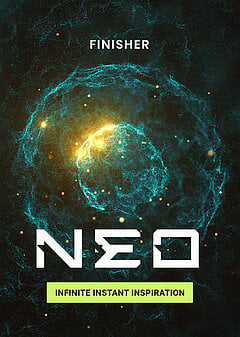The Origins of Drum and Bass
With this blog article, we’re trying to lift the curtain on a once-beloved genre that has seen a dramatic resurgence in the past decade in the music industry: Drum and Bass! Learn about the origins of Drum and Bass and what it’s about.
MARCH 21ST, 2020
How did the Genre Emerge and What is it About?
London, UK – the early 90s.
What began as a brainchild of breakbeat and hardcore maniacs was destined to become a genre all its own. Artists sampled Hip Hop, Reggae, Techno and House, expertly blending them with cut-up breakbeats to form a new style that had fans raving from the very beginning.
If you’ve never heard Drum and Bass before, here’s the condensed version: a marriage of sped-up Hip Hop breakbeats with dubby bass lines, overlaid with strong melodies from Techno and House music. The genre’s hype dipped off after a few years, but in the past decade the music industry has seen a dramatic resurgence of this once-beloved genre.
Young producers who want to step up their dubstep game will benefit immensely from diving into the roots of DnB, especially since dubstep is in some ways a direct manifestation of the intense creativity and edginess that DnB left in its wake. That’s why we created Beatmaker VOID – to give producers a leg up making DnB styles like Jungle, Neurofunk and Jump Up – to welcome modern EDM’s DnB roots back into the mix.
How to Write a DnB Beat?
DnB tracks are built on House chords, Techno sound design, Dancehall lyrics and the occasional Reggae bassline. Its aggressive 160 to 190 BPM tempo sets it far apart from the slower beats present in Hip Hop. DnB involves a bunch of intense sample chopping, re-pitching, and tempo mapping to force your source material to line up with the beat.
Here’s the basic formula: sample, slice, reassemble, and polish. A key component of DnB tracks is complex effect chains, often containing tons of saturation, compression and ambience.
What is the Amen Break?
One of the most iconic samples in DnB is the Amen Break. It’s a 7-second drum solo by The Winstons from the Track Amen Brothers released in 1969. This sample can be found in many different pitches and tones, used by bedroom producers and headlining artists alike. Listen to the original sample:
Who Started DnB?
It’s difficult to trace the genre’s origins back to a single artist – but without a doubt, one of its major pioneers is Goldie (Clifford Joseph Price).
His track Terminator, initially published by the label Reinforced, arguably ignited the start of Drum and Bass culture through complex, fast and futuristic sounds. Today he’s the owner of one of the biggest Drum and Bass labels (Metalheadz), and has presided over monumental growth in the cultural impact and style of the genre.
As with other major genres of what is now EDM, producers began creating their own unique interpretations of DnB and spinning off a wide range of subgenres. One of the most popular is Hardstep, which characteristically pushes a gritty production style where the breaks are far less choppy, in favor of harder, faster and simple electronic melodies. Here’s a link to a subreddit attempting to list ALL subgenres in Drum and Bass – though possibly doomed to failure, it’s as close to a comprehensive list as you’ll find.
How has DnB Changed?
As we know, it became popular in the late 90’s and spread all over Europe and the US. And as it became increasingly inexpensive for producers to create their own music with the plethora of new tools now available to them, no one needed a big studio to bring their music to life. Today, every DAW comes with the basic tools you need to produce and mix a song!
Tools aren’t the bottleneck anymore. Creativity is.
But DnB producers seem to have no shortage of it.
DnB has become such a powerhouse of its own that it’s bleeding into tons of other genres like Techno, Rock and even Pop. Spotify, Deezer, and Beatport are adding more DnB tracks every day, to the point where it’s now globally accessible and charting on mainstream radio. If you’re a gamer, you’ve probably heard it blend into video game soundtracks as well!
How can I Make my own DnB Tracks?
Listen, create, and experience it at live performances as much as humanly possible.
But even though we’ve said it’s not about the tools, if you’re new to producing DnB you’re definitely wondering:
"What plugins do I need to produce a good DnB track?"
Any Producer, All the Time
While the answer is largely subjective, here are a few suggestions to get you started:
Check out soft synths like Serum, Massive or Sylenth1; Trash 2 for compression and crazy distortion; and a beat slicer like Serato Sample or Momentum by Big Fish Audio.
For the drums, you definitely should try our latest plug-in, Beatmaker VOID. With 10 separate kits and 12 smart-mix presets you’ve got everything you need to make hard-hitting DnB breaks. It’s the perfect tool to glue together your dirtiest leads, smoothest pads and thumping basslines.
VOID is especially powerful if you’re just getting started creating DnB, because it will teach you exactly how to quickly construct a pounding groove without interrupting your creative flow.
You’ve got an intense journey of DnB production ahead of you – but it’s worth every minute! Listen to as much DnB as you possibly can in every subgenre and season your own music with all the little bits and pieces of what you hear and love.
Above all else – have fun with it!
Stay up to date
Sign up and we’ll send you an e-mail with product news and helpful stuff every now and then. You may unsubscribe at any time.
Defy Limits
We develop software solutions that enable people to create, consume and interact with music.


